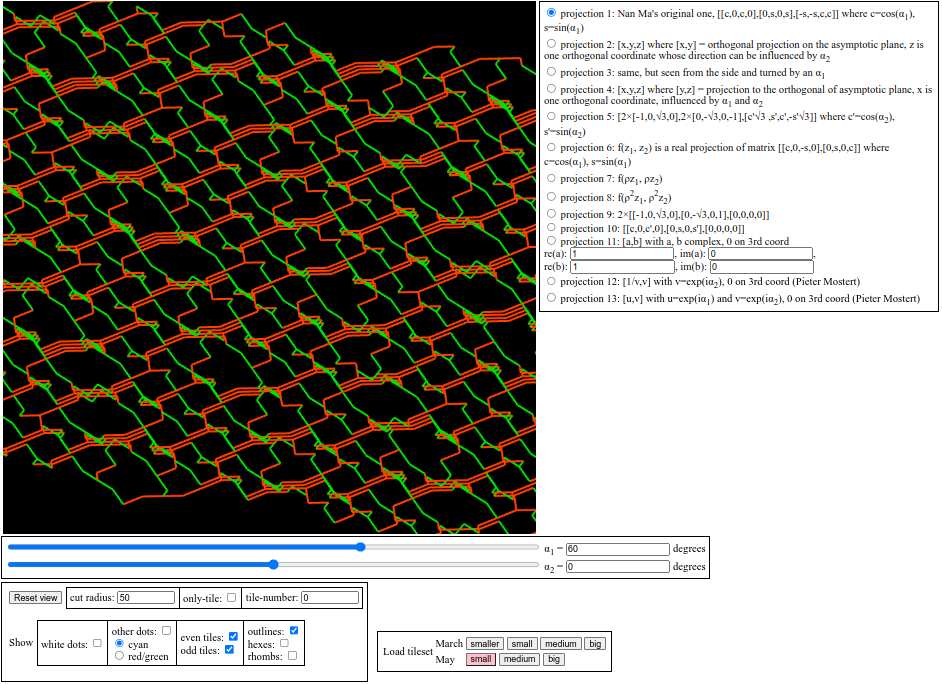4D lift of the tilings by the Smith et al. aperiodic monotile
Holes
One can play varying the different possible projections, real-linear or complex-linear, of the 4D lift and also try and project from 4D to 3D (this can only be real-linear) and watch the output. I have programmed an applet for doing this, available at this address or by clicking the picture below. Let me recall that the red segments are have only their first two components non-zero, and for the green segments it is the last two.
Playing with an early version of it, I was sometimes able to arrange odd tiles of the May tiling to nearly align and project on unexpected shapes leaving empty holes.
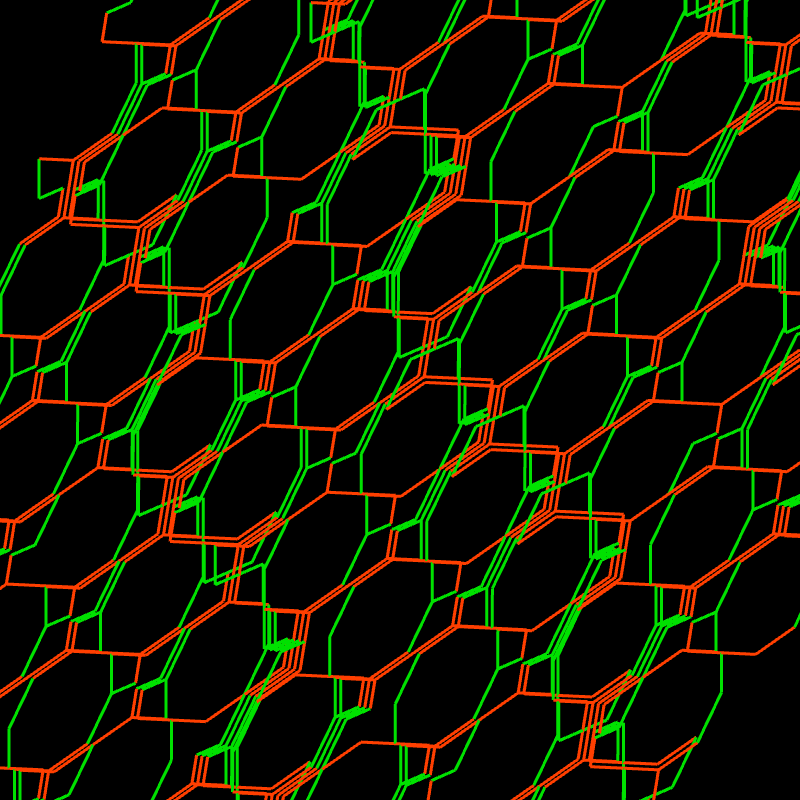 | 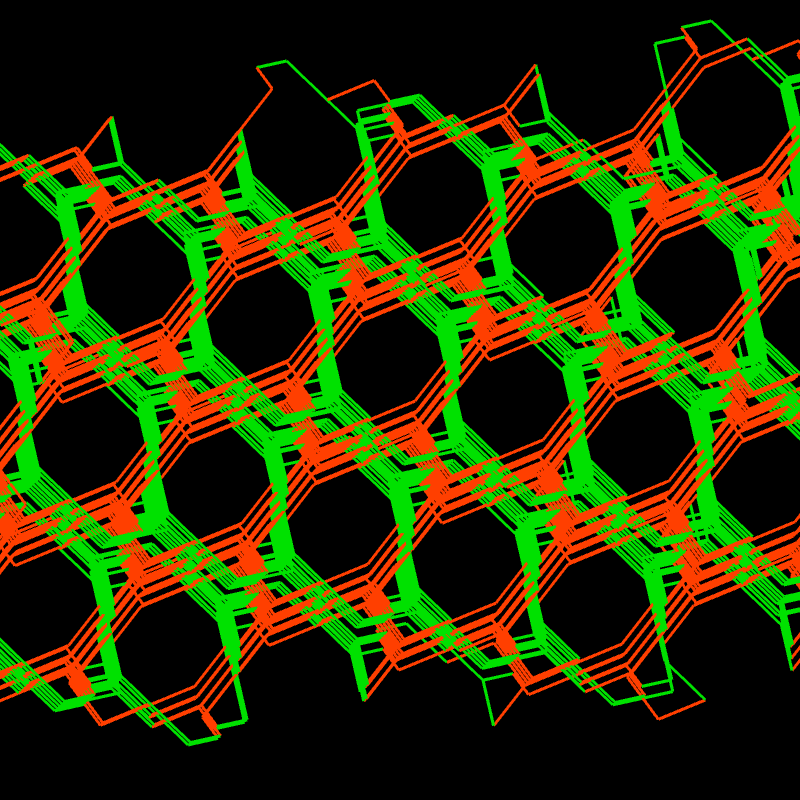 |
To force a perfect alignment you can choose some particular points and find which conditions on the projection matrix this gives to. Doing this twice should, unless some coincidence happens, completely characterize it up to post-composition with a linear map of the plane. So I did that and obtained the following pictures:
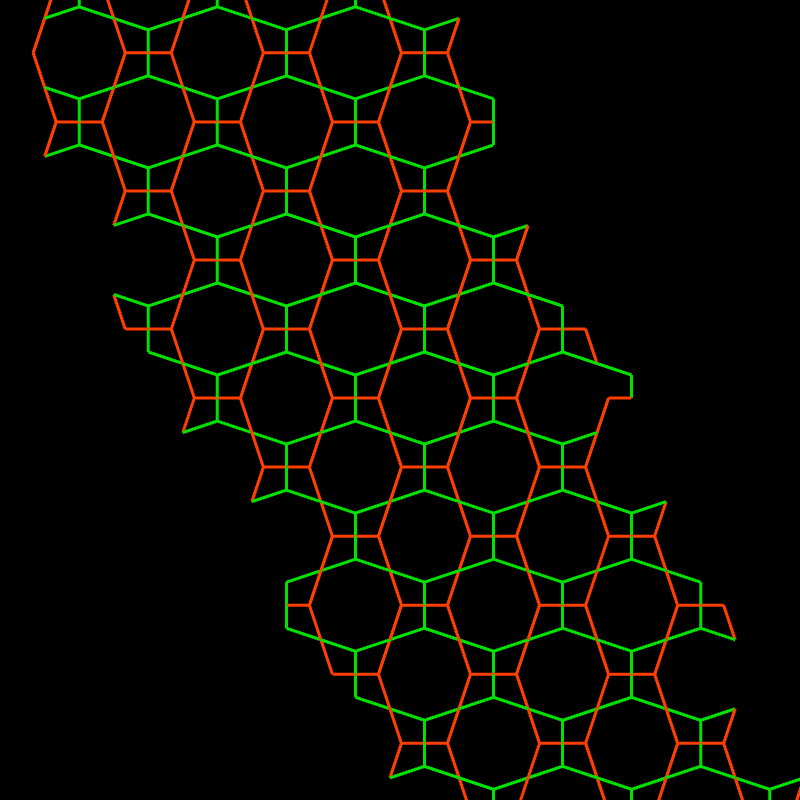 | 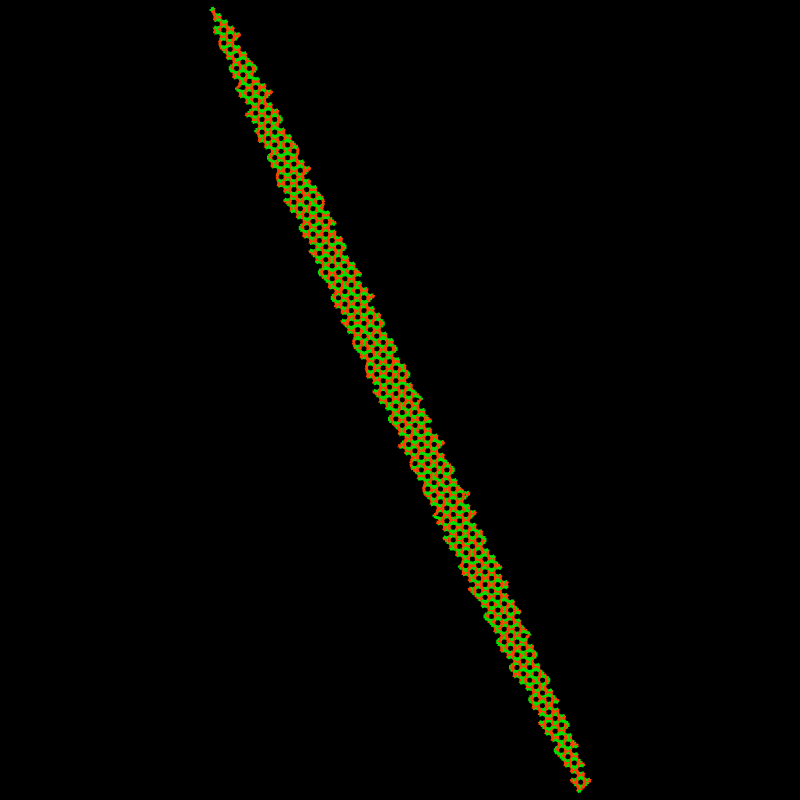 |
Nan Ma realized that my projection matrix was a particular instance of the following family of matrices, for t' = 60°:
\[R_{t'} = \begin{bmatrix}c & 0 & -s & 0 \\ 0 & s & 0 & c\end{bmatrix}\]
where c=cos(t') and s=sin(t').
Note that the tilings have some sort of large scale mean invariance under the rotation by multiples of 60 degrees. If you pre-compose the above matrix by the map ℂ2 → ℂ2: (z1,z2) ↦ (ρkz1,ρkz2) where ρ=exp(i 2π/6), then you get pictures that are almost the same as above.
If you vary t' in [0,180°] (no need to go beyond because R_t'+180° = −Rt'), you get very different pictures, except for t' = 120° for which the picture looks like this:
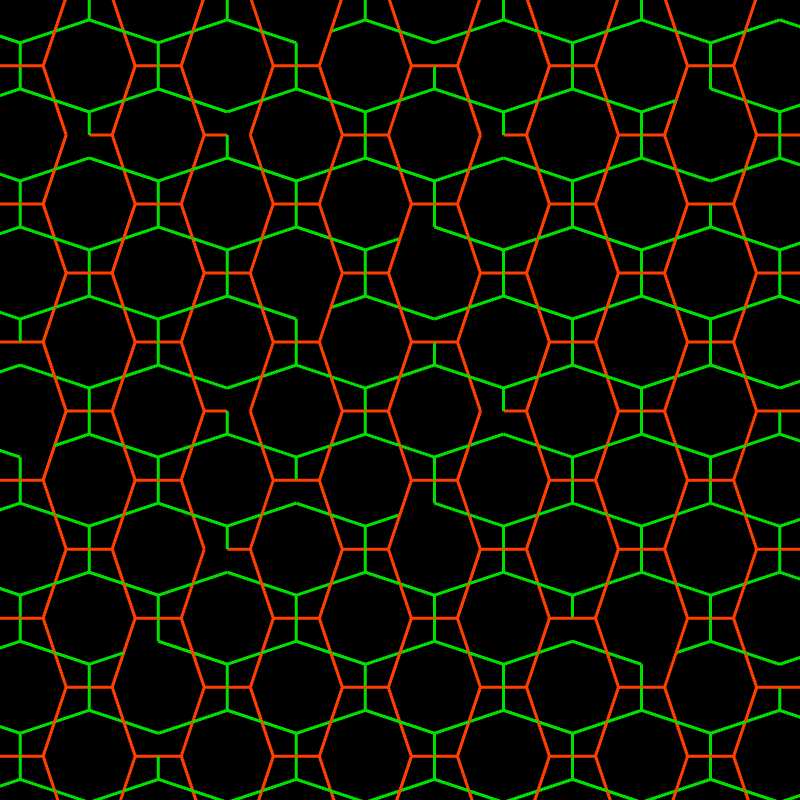 | 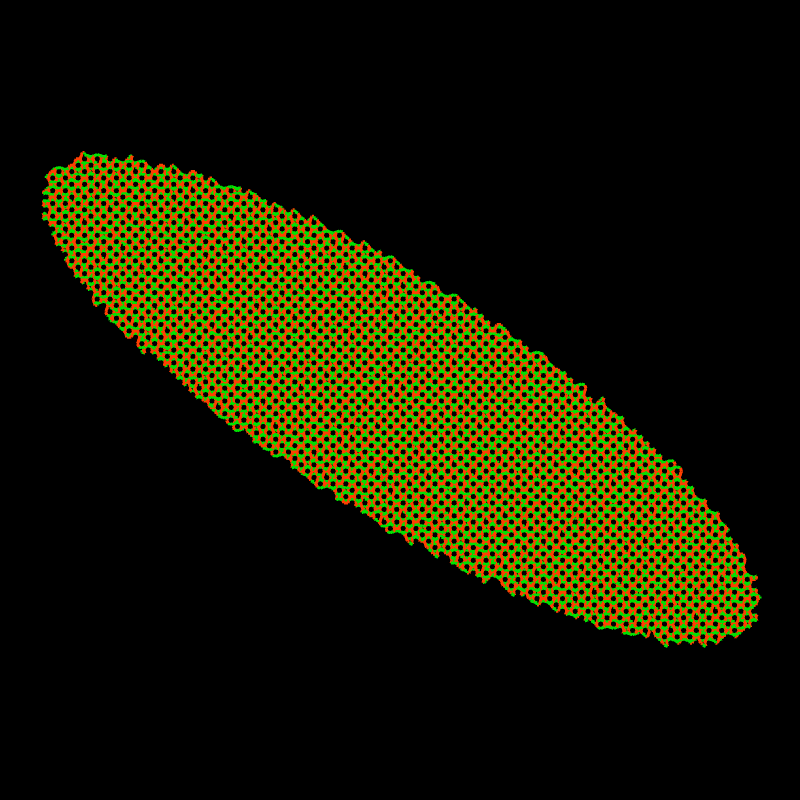 |
Nan Ma produced the following animation:
And now the same pictures for the March tiling.
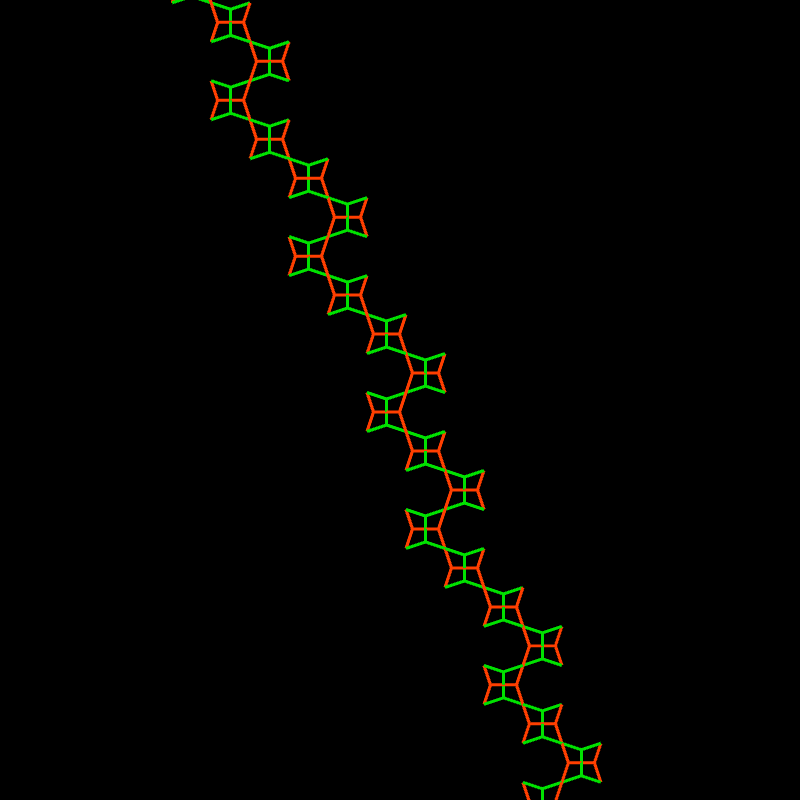 | 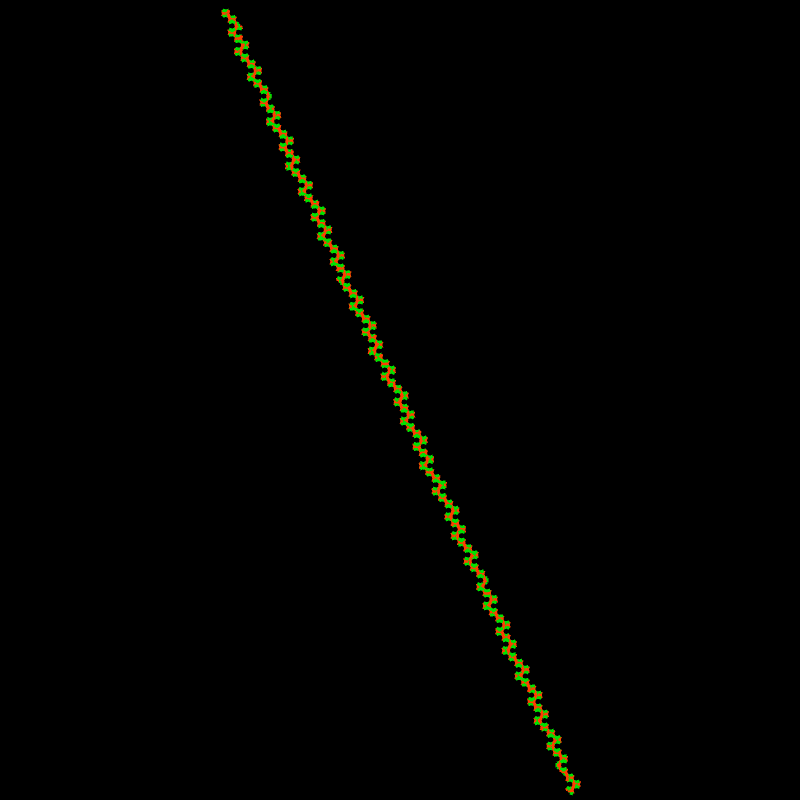 |
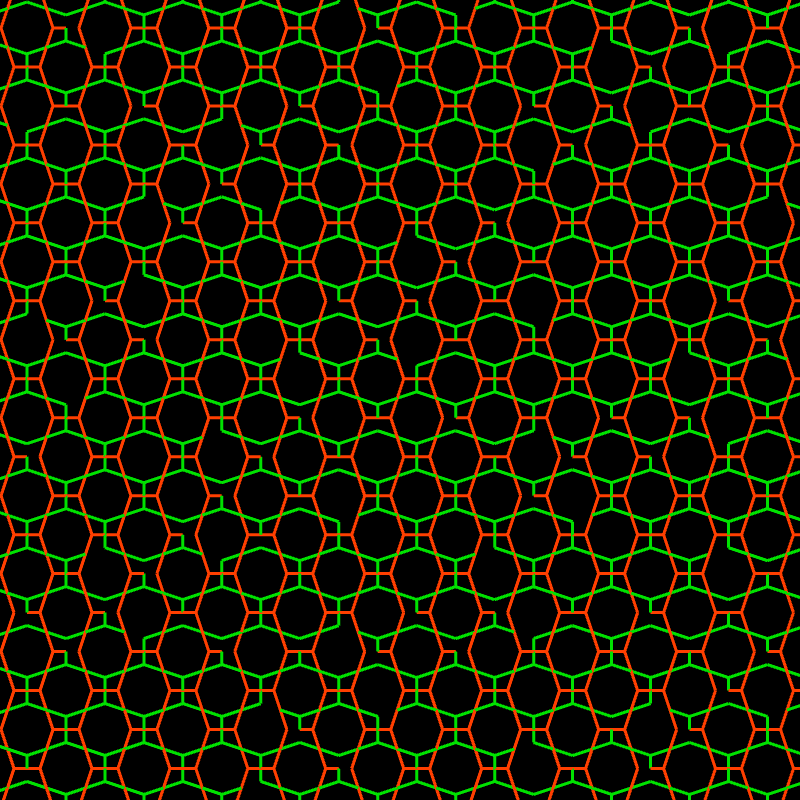 | 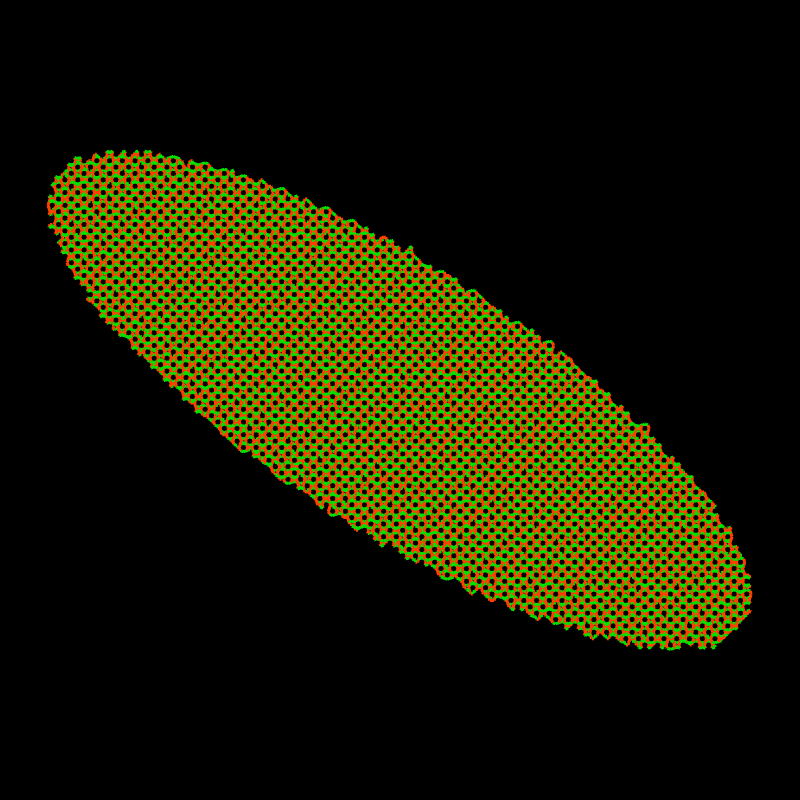 |
Let us colour the vertices according to the following scheme:
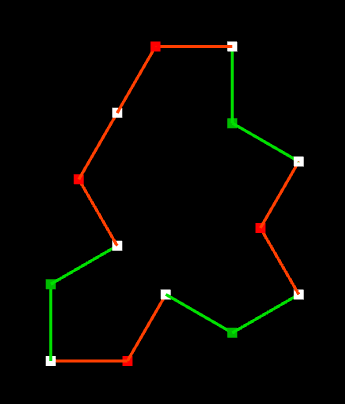
and do not forget to permute red and green for odd tiles in the case of the May tiling. Then the May t'=60° projections look like this:

Up to recentering a white dot to the orgin and dividing all coordinates by √3/4 we have, for the March and May tilings and t'=60° or 120°:
- the projected dots all lie on the grid ℤ×ℤ, in fact on the subset of this grid consisting of those points (m,n) for which m+n is even.
- 4D vertices of different colours in the lifted tiling project to different points.
- All white dots lie in the subgrid for which moreover m and n are multiples of 3,
- but no white dot satisfies (m,n) = (6a,6b) with a and b integers and a+b is odd.
- All green segments are projected to the edges, of an elongated hexagonal grid, and all green dots lie on the vertices of this grid. Green dots coordinates (m,n) satisfy: 6∣m, 2∣n, 6∤n and the two possible classes of m modulo 12 is determined by which of the 4 possible class modulo 12 the number n has.
- Red segments and red dots lie on this hex-grid rotated bu 90°.
- These two hexagonal grids intersect precisely on the set of allowed positions for the white dots.
We observe that, taking the union of the green and red hexagonal grids that big octagonal shaped hollows appear, alternating with with 4 pointed star shapes. The octagons are not regular.
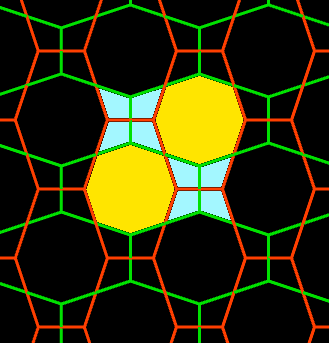
Two yellow octagons and two cyan blue stars.
After further study I observed the following. In the table below I call octagon the holes appearing when taking the union of the two elongated hexagonal grids described above and visible on the previous picture. I will say that it is surrounded by a tile if the tile's lifted 4D outline projects to a curve that winds around the octagon. Each even tile can be in 6 possible orientations, which come in 3 pairs of opposite orientations (rotated by 180°). The same is true for each odd tile.
| t'=60° | t'=120° | |
| March | no octagon is surrounded by any tile | each octagon is surrounded by precisely one tile, and those tiles are exactly the even tiles in a pair of opposite orientation, and the odd tiles in a pair of opposite orientation |
| May | each octagon is surrounded by precisely one tile, and those tiles are exactly the odd tiles in a pair of opposite orientation | each octagon is surrounded by precisely one tile, and those tiles are exactly the even tiles in a given pair of opposite orientations |
Note: To change the orientations pairs, pre-compose the projection Rt' by ℂ2 → ℂ2: (z1,z2) ↦ (ρkz1,ρkz2) where ρ=exp(i 2π/6) and k=1 or 2.
In the video below I start from a May tiling, fade out all tiles that are odd or whose orientation are not one of two opposite selected orientation. Then I progressively move the projection matrix from Ct=45° where to Rt'=120°, where Ct = Lcos(t),sin(t).
Below, the same but for the March tiling, slowly going from Ct=60° to Rt'=120°. Here we selected tiles according the table above.
Same, with turtles, slowly going from Ct=30° to Rt'=120°.
It is a striking observation, but we do not know what to do with this knowledge.
